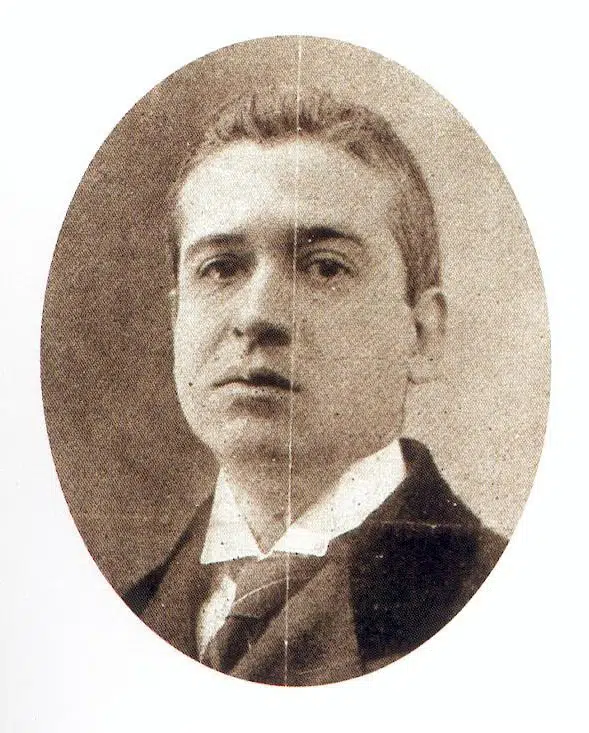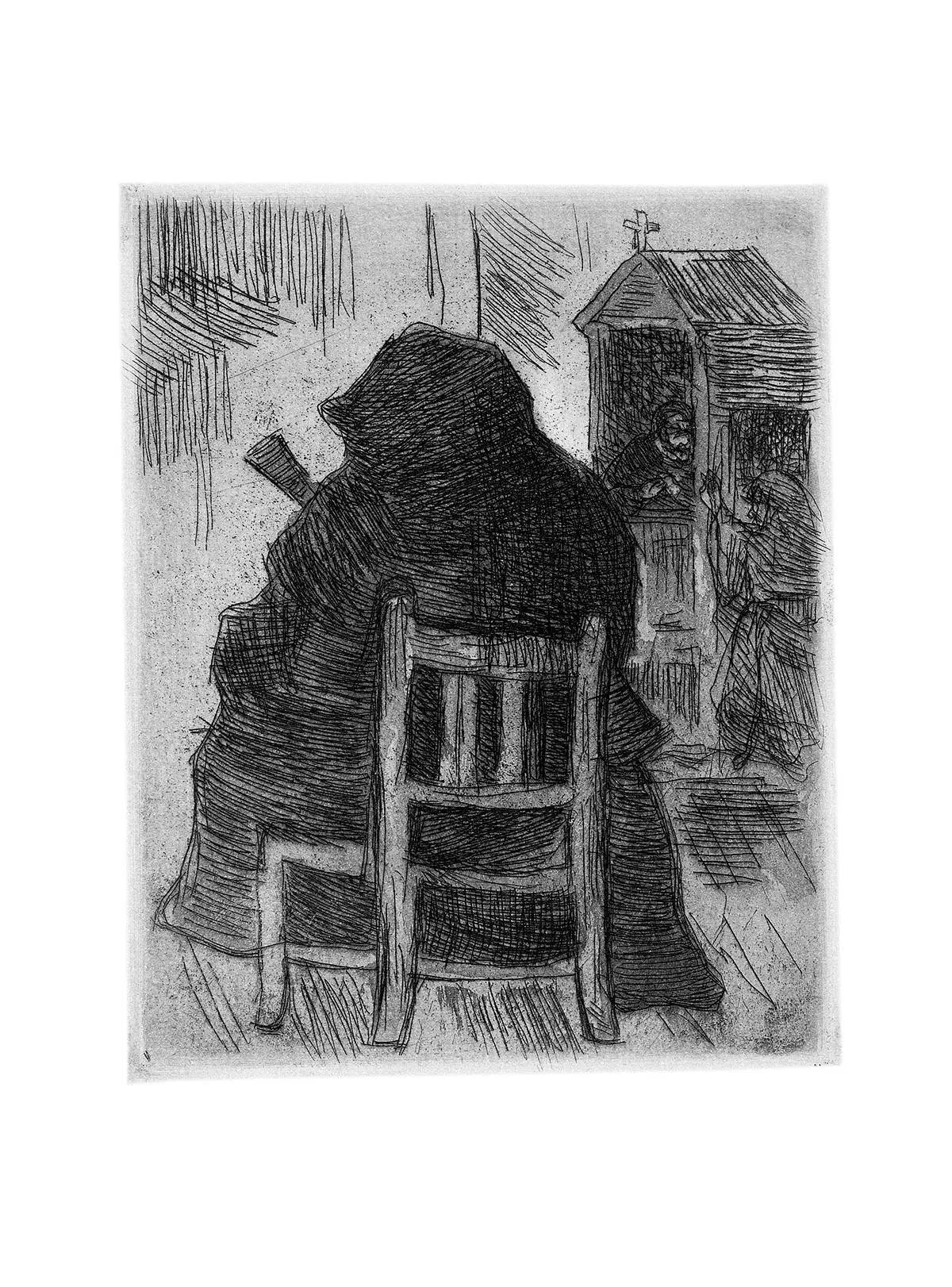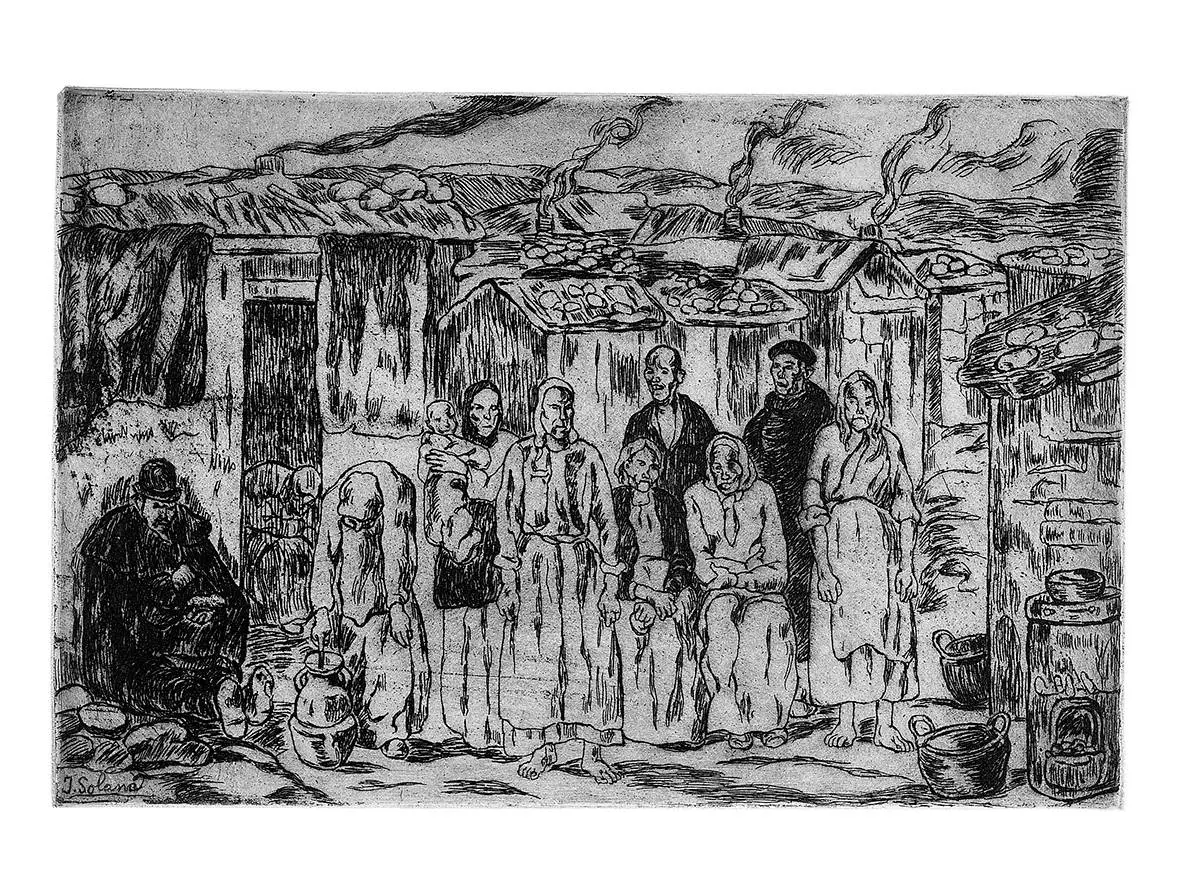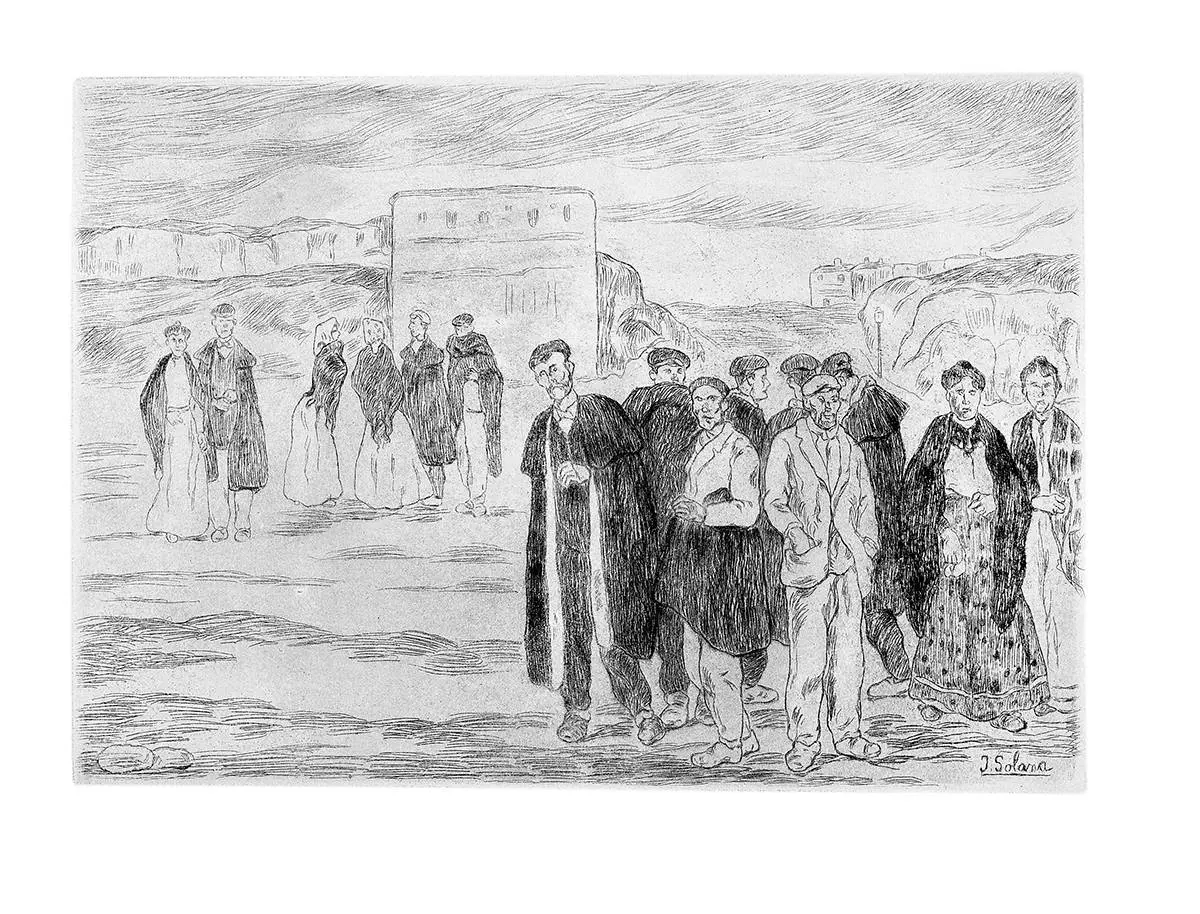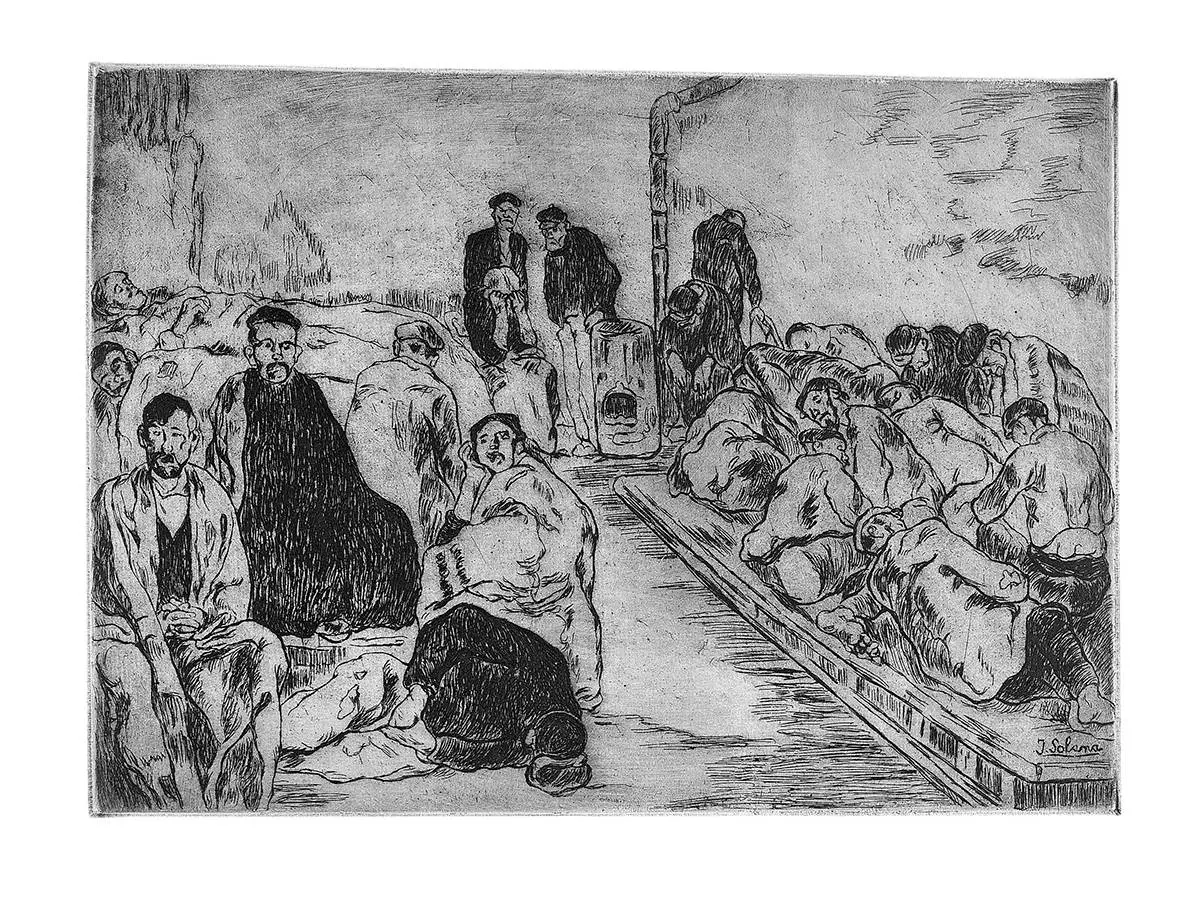COLLECTION CATALOG
Biografía
A series of tragic events that occurred in the early years of his life influenced José Guitiérrez Solana’s (Madrid, 1886 – 1945) worldview. In 1904 he participated in the Exposición Nacional de Bellas Artes [National Fine Arts Exhibition], sharing the “Sala del Crimen” [Crime Hall] with Isidre Nonell, Darío de Regoyos, and Julio Romero de Torres.
He became known as a writer and draftsman thanks to the two volumes of Madrid, escenas y costumbres [Madrid, Scenes and Customs], published in 1913 and 1918. In 1918 he regularly attended intellectual gatherings at the Café de Pombo, which he painted in a renowned canvas contemporary to his publication La España negra [Black Spain] (1920) dedicated to Ramón Gómez de la Serna. The book portrayed Spain’s backwardness, exploring in depth ideas that had been set forth by the writers of the Generation of 1898. In 1928 he tried to join the international scene with an exhibition in Paris. American painter John Singer Sargent acquired one of his paintings. At this point, his work was associated with European modernity, particularly German Post-Expressionism and Magical Realism.
During the Spanish Civil War, after the assassination of his cousins, Valentín and Isidoro, he took refuge in Valencia. In 1937 he participated in the Spanish Republic’s Pavilion at the Paris World’s Fair. At that time, he exhibited his work in the French capital and entertained the idea of creating the book París callejero [Paris Street Guide]. When the war ended he returned to Spain with Eugenio d’Ors’ encouragement.
Soy el id del autor actual: 486505
El idioma actual es: en
Soy el id del autor en español: 474391
Artworks of José Gutiérrez Solana

